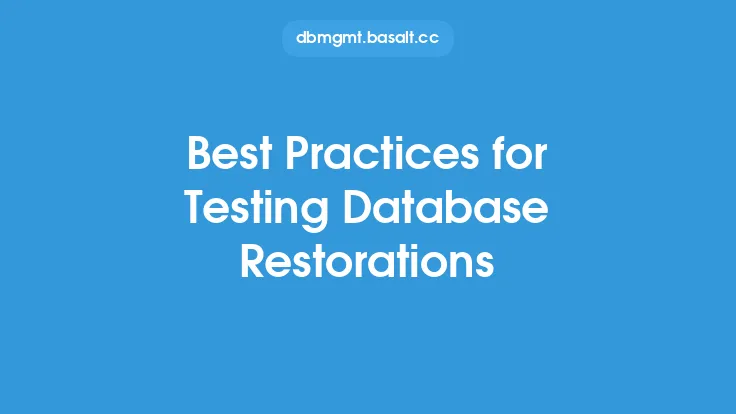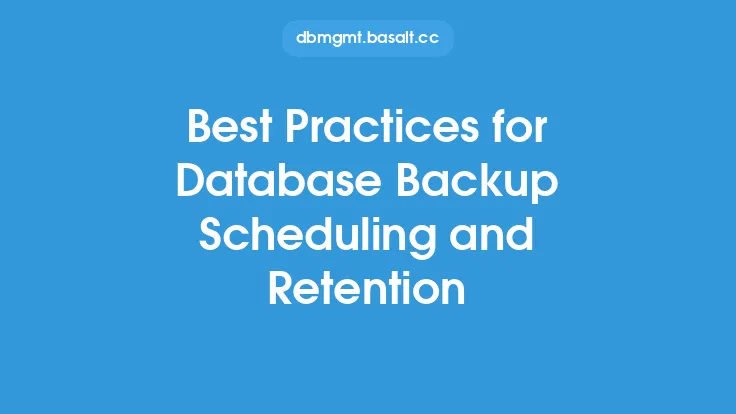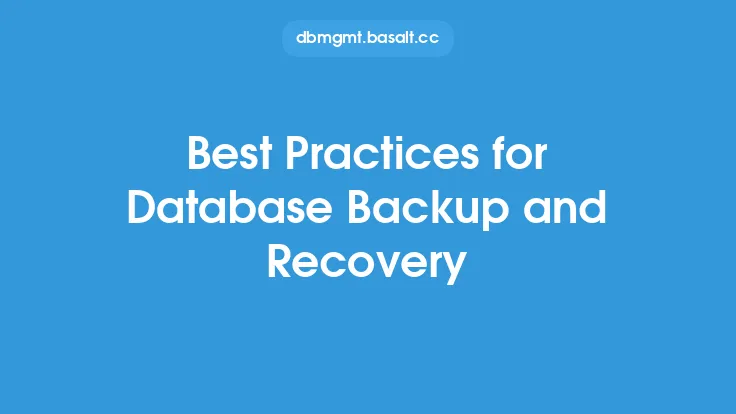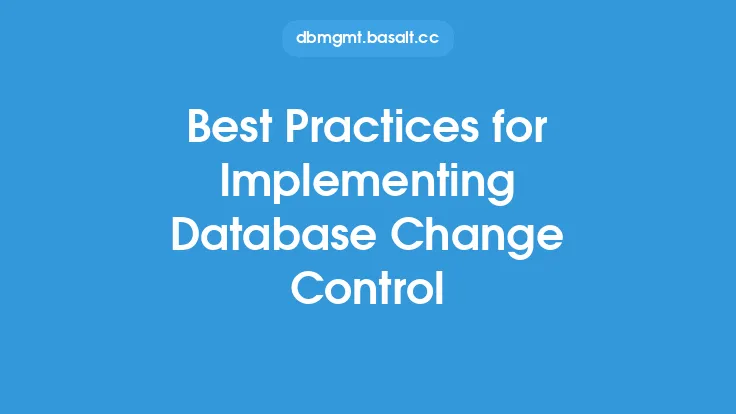When it comes to ensuring the reliability and performance of databases, testing plays a crucial role. Database test automation is a key aspect of this process, allowing teams to verify the functionality and integrity of their databases quickly and efficiently. However, to get the most out of database test automation, it's essential to follow best practices that ensure tests are effective, efficient, and maintainable. In this article, we'll explore the best practices for database test automation, covering topics such as test planning, data management, and test execution.
Introduction to Database Test Automation
Database test automation involves using software tools to execute pre-scripted tests on a database, verifying that it behaves as expected. This can include testing database schema, data integrity, and performance, as well as ensuring that database applications and interfaces function correctly. By automating database testing, teams can reduce the time and effort required to test databases, freeing up resources for other critical tasks. Additionally, automated testing can help catch errors and defects early in the development cycle, reducing the risk of downstream problems and improving overall quality.
Planning Database Test Automation
Before starting a database test automation project, it's essential to plan carefully. This involves identifying the scope of testing, determining the types of tests to be executed, and selecting the tools and technologies to be used. Teams should also consider the skills and resources required to implement and maintain automated testing, as well as the metrics and benchmarks to be used to measure test effectiveness. A well-planned test automation strategy will help ensure that tests are comprehensive, efficient, and aligned with business objectives.
Data Management for Database Test Automation
Data management is a critical aspect of database test automation. Teams must ensure that test data is accurate, complete, and relevant to the testing objectives. This can involve creating synthetic data, masking sensitive information, and managing data volumes and complexity. Additionally, teams must consider data privacy and security regulations, such as GDPR and HIPAA, when designing and executing automated tests. By using data management best practices, teams can ensure that their automated tests are reliable, efficient, and compliant with regulatory requirements.
Test Execution and Maintenance
Once automated tests are designed and implemented, they must be executed and maintained regularly. This involves scheduling tests to run at regular intervals, monitoring test results, and troubleshooting failures. Teams should also consider using continuous integration and continuous deployment (CI/CD) pipelines to automate test execution and feedback. By integrating automated testing into the development cycle, teams can ensure that databases are thoroughly tested and validated before deployment to production.
Selecting Database Test Automation Tools
The choice of database test automation tool can significantly impact the effectiveness and efficiency of testing. Teams should consider factors such as tool functionality, ease of use, and compatibility with their database management system (DBMS) and other technologies. Popular database test automation tools include Selenium, Appium, and TestComplete, as well as specialized tools like DBFit and tSQLt. By selecting the right tool for their needs, teams can streamline their testing process and improve overall quality.
Best Practices for Database Test Automation
To get the most out of database test automation, teams should follow best practices that ensure tests are effective, efficient, and maintainable. These include:
- Keeping tests simple, focused, and easy to maintain
- Using data-driven testing to reduce test duplication and improve coverage
- Implementing test automation frameworks to simplify test development and execution
- Using continuous integration and continuous deployment (CI/CD) pipelines to automate test feedback
- Monitoring test results and troubleshooting failures regularly
- Continuously reviewing and refining test automation strategies to ensure they remain effective and efficient
Overcoming Challenges in Database Test Automation
Despite the benefits of database test automation, teams may encounter challenges when implementing and maintaining automated testing. These can include technical difficulties, resource constraints, and cultural or organizational barriers. To overcome these challenges, teams should:
- Develop a clear understanding of testing objectives and requirements
- Establish a strong testing culture and mindset
- Provide training and support for testing teams
- Continuously monitor and refine testing processes and strategies
- Leverage automation tools and technologies to streamline testing and improve efficiency
Conclusion
Database test automation is a critical aspect of ensuring the reliability and performance of databases. By following best practices and using the right tools and technologies, teams can create effective, efficient, and maintainable automated tests that verify database functionality and integrity. Whether you're just starting out with database test automation or looking to refine your existing testing strategy, the principles and techniques outlined in this article can help you achieve your testing objectives and improve overall quality.





